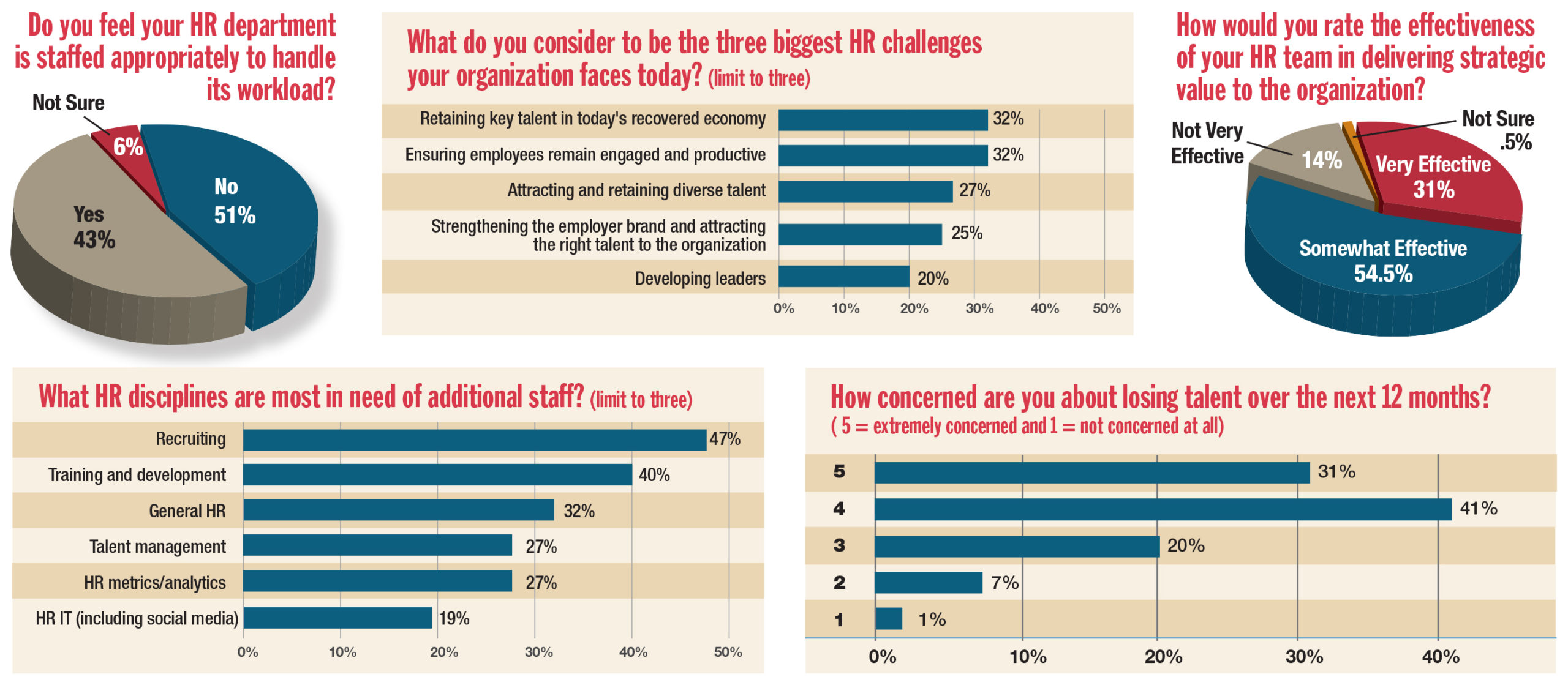Year after year, the job of chief HR officer continues to become more challenging–no matter the size of the organization, no matter the sector. But when it comes to what’s keeping HR leaders up at night, a consistent theme emerges from one year to the next: Ensuring employees remain engaged and productive continues to reign supreme.
In HRE’s latest What’s Keeping HR Leaders Up at Night? survey conducted in December 2018 and January 2019, 32 percent of the HR leaders cited employee engagement and productivity as their top challenges, compared to 29 percent a year earlier. These findings unquestionably speak to the profession’s awareness that organizational success is directly linked to whether it employs a focused and engaged workforce.
Have your voice heard: Take the 2020 survey here
What’s different about this year’s finding is the fact that, for the first time, it shared the top spot with retaining key talent in today’s recovered economy, which 32 percent of the 260 respondents cited as their top concern.
When HR leaders were asked how worried they were about losing talent over the next 12 months, around 72 percent indicated they had either a decent or high degree of concern, compared to 67 percent in last year’s survey.
In terms of what they were doing to ensure their workers were engaged and didn’t jump ship, top strategies included increasing employee communication (59 percent), providing employees with additional training and development (55 percent), and increasing and improving leader and manager training (52 percent). These were followed by assisting employees in their career development (52 percent), increasing recognition and feedback (42 percent), and changing compensation (32 percent).
Taking the next spot on this year’s list of concerns was attracting and retaining diverse talent, at 26 percent, followed by strengthening the employer brand and attracting the right talent to the organization (25 percent) and developing leaders (20 percent). (Aligning people strategies to business objectives was pushed off the top-five list.)
In terms of what HR leaders are spending their time on, recruiting topped the list (45 percent), followed by employee relations (32 percent), and benefits, talent management and leadership development (all tied at 27 percent). While the areas on the list closely mirrored the 2018 results, it’s worth noting that the percentages citing them in 2019 were all notably higher than a year earlier.
As might be expected, CHRO stress levels continued to climb, with nearly three-quarters of the respondents saying they increased somewhat (44 percent) or dramatically (29 percent). Just under 3 percent said stress levels declined. Despite this, only about 27 percent described their work/life balance as being problematic.
Once again, the respondents would like to see policymakers put or keep healthcare at the top of their legislative and regulatory agendas, with 76 percent citing it as a top-three priority. It was followed by immigration (29 percent).
Reflecting on today’s strong jobs market, nearly half the respondents (49 percent) said the overall size of their organization’s workforce increased over the past 12 months, compared to 14 percent who said it decreased. About 36 percent indicated it remained the same, while 1 percent weren’t sure.
In contrast, only 22 percent of the HR leaders said their department’s staffing levels increased last year, with only 8 percent saying their departments decreased and the remaining reporting no change, further indication that many HR organizations are continuing to be asked to do more with less.
Drilling a little deeper into this topic, just over half of the respondents (51 percent) said they didn’t have enough staff to appropriately handle the workload this year, roughly 5 percent higher than those who expressed that sentiment in 2018.


